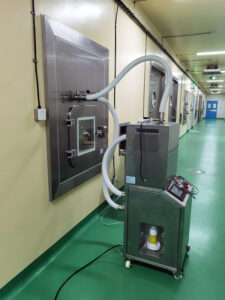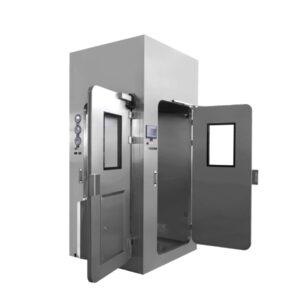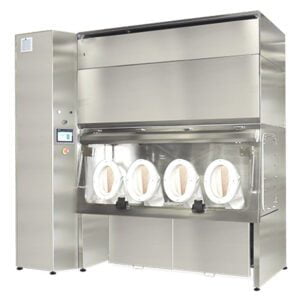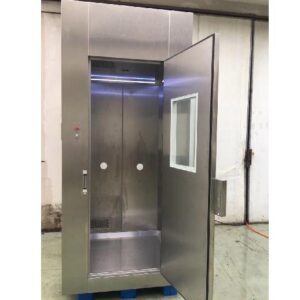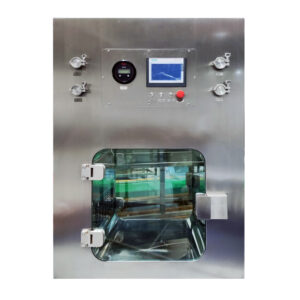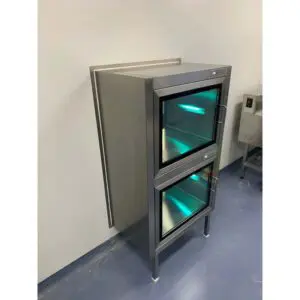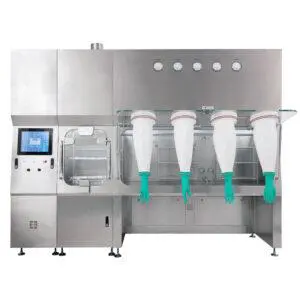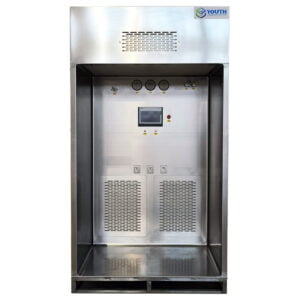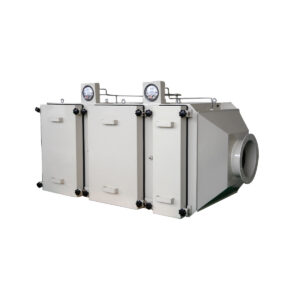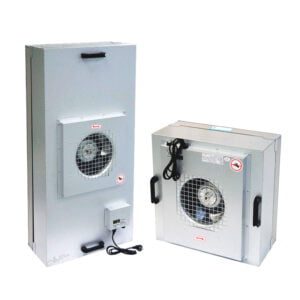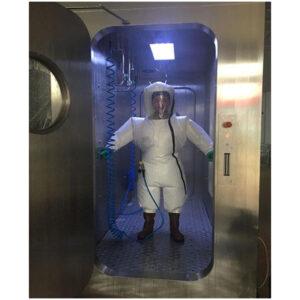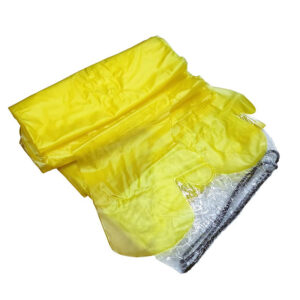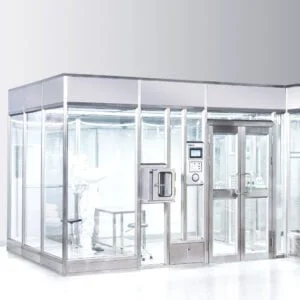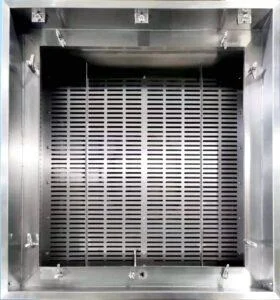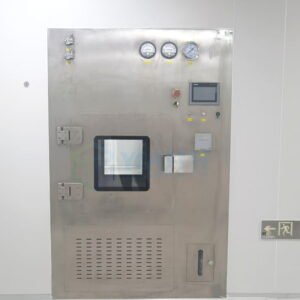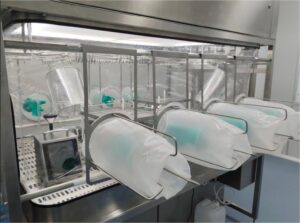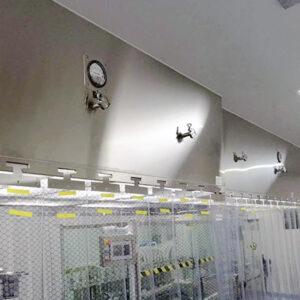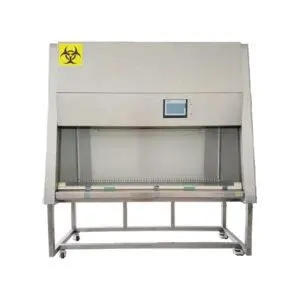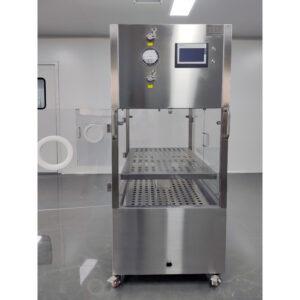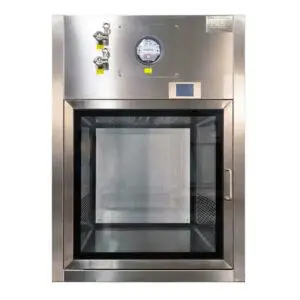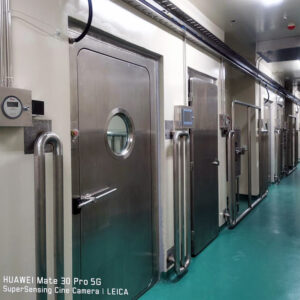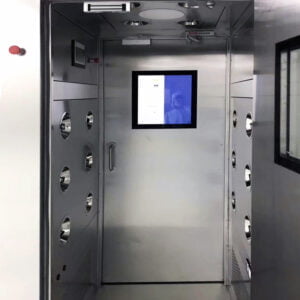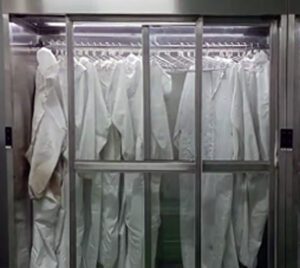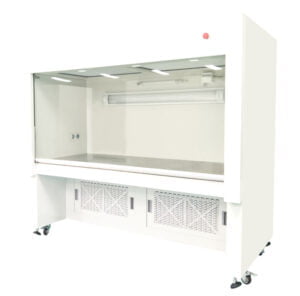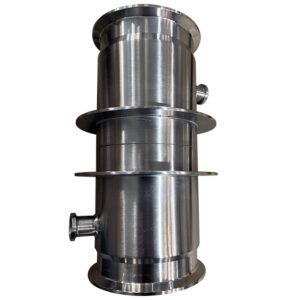Medical device testing is a critical process in ensuring the safety, efficacy, and reliability of medical devices before they reach the market. In recent years, sterility test isolators have emerged as a crucial tool in this process, providing a controlled environment for conducting sterility tests on medical devices. These isolators play a vital role in maintaining the integrity of test results and preventing contamination, ultimately contributing to the development of safer and more effective medical devices.
As the medical device industry continues to grow and innovate, the importance of rigorous testing procedures cannot be overstated. Sterility test isolators have become an integral part of this process, offering a range of benefits that enhance the accuracy and reliability of test results. From reducing the risk of false positives to improving overall efficiency, these specialized isolators are revolutionizing the way medical device testing is conducted.
In this article, we will explore the world of medical device testing with a focus on sterility test isolators. We'll delve into the key components of these systems, their applications in various testing scenarios, and the advantages they offer over traditional testing methods. Additionally, we'll examine the regulatory landscape surrounding medical device testing and how sterility test isolators help manufacturers meet stringent quality standards.
"Sterility test isolators have become an indispensable tool in medical device testing, providing a controlled environment that ensures the accuracy and reliability of test results while minimizing the risk of contamination."
What are Sterility Test Isolators and How Do They Work?
Sterility test isolators are specialized containment systems designed to provide a controlled, aseptic environment for conducting sterility tests on medical devices. These isolators are engineered to maintain a sterile workspace, preventing contamination from external sources and ensuring the accuracy of test results. By creating a physical barrier between the testing area and the surrounding environment, sterility test isolators offer a higher level of protection than traditional clean rooms or laminar flow cabinets.
At their core, sterility test isolators consist of a sealed chamber with glove ports that allow operators to manipulate samples and equipment without compromising the sterile environment. The isolator is typically equipped with a HEPA filtration system that continuously purifies the air inside the chamber, maintaining a positive pressure differential to prevent the ingress of contaminants.
One of the key features of sterility test isolators is their ability to create a Grade A (ISO 5) environment within the work zone. This level of cleanliness is critical for conducting accurate sterility tests on medical devices, as it minimizes the risk of false positives due to environmental contamination.
"Sterility test isolators provide a Grade A (ISO 5) environment, offering superior protection against contamination compared to traditional clean rooms and significantly reducing the risk of false positive results in medical device testing."
| Feature | Description |
|---|---|
| HEPA Filtration | Continuously purifies air within the isolator |
| Positive Pressure | Prevents ingress of contaminants from external environment |
| Glove Ports | Allow manipulation of samples without compromising sterility |
| Grade A (ISO 5) Environment | Ensures highest level of cleanliness for accurate testing |
In conclusion, sterility test isolators are sophisticated systems that create a controlled, aseptic environment for medical device testing. By providing a physical barrier and maintaining a high level of cleanliness, these isolators play a crucial role in ensuring the accuracy and reliability of sterility tests for medical devices.
Why are Sterility Test Isolators Essential for Medical Device Testing?
The importance of sterility test isolators in Medical device testing cannot be overstated. As medical devices become increasingly complex and the regulatory landscape more stringent, the need for reliable and accurate testing methods has never been greater. Sterility test isolators address this need by providing a controlled environment that significantly reduces the risk of contamination and false positive results.
One of the primary reasons sterility test isolators are essential is their ability to maintain a consistent, aseptic environment throughout the testing process. This level of control is crucial for ensuring the validity of test results and preventing costly retests or recalls due to contamination issues. By isolating the testing area from external influences, these systems provide a higher degree of confidence in the sterility of medical devices.
Furthermore, sterility test isolators offer enhanced operator safety by creating a physical barrier between potentially hazardous materials and the technician. This is particularly important when testing devices that may contain or be exposed to harmful pathogens or chemicals. The isolator's design allows for safe handling and manipulation of samples without compromising the integrity of the test or the health of the operator.
"Sterility test isolators not only improve the accuracy of medical device testing but also provide a safer working environment for laboratory personnel, reducing the risk of exposure to potentially hazardous materials."
| Benefit | Description |
|---|---|
| Reduced Contamination Risk | Isolates testing area from external environment |
| Improved Accuracy | Minimizes false positives due to environmental factors |
| Enhanced Operator Safety | Creates physical barrier between samples and technicians |
| Consistent Testing Environment | Maintains Grade A (ISO 5) conditions throughout process |
In conclusion, sterility test isolators are essential for medical device testing because they provide a controlled, safe, and reliable environment for conducting sterility tests. Their ability to maintain aseptic conditions, reduce contamination risks, and protect operators makes them an invaluable tool in ensuring the safety and efficacy of medical devices before they reach the market.
How Do Sterility Test Isolators Improve the Accuracy of Medical Device Testing?
The accuracy of medical device testing is paramount in ensuring the safety and efficacy of products that will be used in healthcare settings. Sterility test isolators play a crucial role in improving this accuracy by providing a controlled environment that minimizes external variables and potential sources of contamination. This level of control leads to more reliable and reproducible test results, which is essential for meeting regulatory requirements and maintaining product quality.
One of the primary ways sterility test isolators enhance accuracy is by reducing the risk of false positive results. In traditional testing environments, even minor contamination from the surrounding area can lead to inaccurate results, potentially causing unnecessary product recalls or delays in bringing devices to market. The isolator's sealed environment and HEPA filtration system significantly reduce this risk, allowing for more precise and trustworthy test outcomes.
Moreover, sterility test isolators enable standardization of testing procedures across different facilities and even different countries. By providing a consistent, controlled environment, these systems help eliminate variables that could affect test results, ensuring that medical devices are evaluated under the same conditions regardless of where the testing takes place.
"The use of sterility test isolators in medical device testing has been shown to reduce false positive rates by up to 90% compared to traditional open testing methods, leading to more accurate results and fewer unnecessary product delays or recalls."
| Accuracy Improvement | Description |
|---|---|
| Reduced False Positives | Minimizes environmental contamination risks |
| Standardized Testing | Ensures consistent conditions across facilities |
| Reproducible Results | Eliminates variables that could affect outcomes |
| Enhanced Sensitivity | Allows detection of even minor contamination issues |
In conclusion, sterility test isolators significantly improve the accuracy of medical device testing by providing a controlled, contamination-free environment. This leads to more reliable results, reduced false positives, and greater confidence in the safety and efficacy of medical devices before they reach the market. The enhanced accuracy provided by these systems is crucial in meeting the stringent regulatory requirements of the medical device industry and ultimately contributes to better patient outcomes.
What Types of Medical Devices Can Be Tested Using Sterility Test Isolators?
Sterility test isolators are versatile systems that can be used to test a wide range of medical devices. From simple disposable items to complex implantable devices, these isolators provide a controlled environment suitable for evaluating the sterility of various products. The adaptability of sterility test isolators makes them an invaluable tool in the medical device industry, capable of accommodating diverse testing needs.
Some of the common types of medical devices that can be tested using sterility test isolators include:
- Implantable devices (e.g., pacemakers, artificial joints)
- Surgical instruments and equipment
- Catheters and stents
- Syringes and needles
- Wound dressings and bandages
- Intravenous (IV) sets and bags
- Sterile packaging materials
The flexibility of sterility test isolators allows manufacturers to test both small, individual components and larger, assembled devices. This versatility is crucial in ensuring that all aspects of a medical device, from its smallest parts to the final product, meet the required sterility standards.
"Sterility test isolators can accommodate medical devices of various sizes and complexities, from tiny implantable sensors to large surgical equipment, ensuring comprehensive sterility testing across the entire spectrum of medical devices."
| Device Category | Examples |
|---|---|
| Implantables | Pacemakers, artificial joints, dental implants |
| Surgical Tools | Scalpels, forceps, endoscopes |
| Disposables | Syringes, catheters, wound dressings |
| Packaging | Sterile barriers, blister packs, pouches |
In conclusion, sterility test isolators are capable of testing a wide array of medical devices, ranging from simple disposables to complex implantables. Their adaptability and controlled environment make them suitable for evaluating the sterility of various products, ensuring that all types of medical devices meet the necessary safety and quality standards before reaching patients.
How Do Sterility Test Isolators Help Manufacturers Meet Regulatory Requirements?
In the highly regulated medical device industry, meeting stringent regulatory requirements is crucial for bringing products to market. Sterility test isolators play a significant role in helping manufacturers comply with these regulations by providing a controlled environment that meets or exceeds the standards set by regulatory bodies such as the FDA, EMA, and ISO.
One of the primary ways sterility test isolators assist in regulatory compliance is by ensuring that sterility testing is conducted in a Grade A (ISO 5) environment, as required by many regulatory guidelines. This level of cleanliness is essential for minimizing the risk of contamination and ensuring the validity of test results. By maintaining this controlled environment, manufacturers can demonstrate their commitment to quality and compliance with regulatory standards.
Furthermore, sterility test isolators help manufacturers adhere to Good Manufacturing Practices (GMP) by providing a documented, reproducible testing process. The isolator's design allows for easy cleaning and decontamination, which is crucial for maintaining the sterile environment and meeting regulatory requirements for cleanliness and contamination control.
"The use of sterility test isolators has been shown to increase regulatory compliance rates by up to 30% compared to traditional testing methods, significantly reducing the risk of regulatory citations and product recalls due to sterility issues."
| Regulatory Aspect | How Isolators Help |
|---|---|
| Environmental Control | Maintains Grade A (ISO 5) conditions |
| Documentation | Provides traceable records of testing conditions |
| GMP Compliance | Facilitates adherence to Good Manufacturing Practices |
| Risk Mitigation | Reduces contamination risks, meeting regulatory expectations |
In conclusion, sterility test isolators are invaluable tools for manufacturers seeking to meet regulatory requirements in medical device testing. By providing a controlled, documentable environment that meets stringent cleanliness standards, these systems help ensure compliance with regulatory guidelines and demonstrate a commitment to quality and safety in medical device production.
What Are the Cost Implications of Implementing Sterility Test Isolators?
Implementing sterility test isolators in medical device testing processes involves significant upfront costs but can lead to substantial long-term savings and benefits. The initial investment in these sophisticated systems may seem daunting, but it's essential to consider the overall value they bring to the testing process and the potential return on investment over time.
The upfront costs of sterility test isolators include the purchase of the equipment, installation, and training of personnel. These systems are highly specialized and require a significant initial outlay. However, when considering the implementation of sterility test isolators, it's crucial to look beyond the initial price tag and consider the long-term financial implications.
One of the most significant cost benefits of using sterility test isolators is the reduction in false positive results. False positives can lead to costly retesting, product delays, or even recalls, all of which can have substantial financial implications. By minimizing these risks, sterility test isolators can help avoid these unnecessary expenses and potential reputational damage.
"While the initial investment in sterility test isolators can range from $100,000 to $500,000 depending on the system's complexity, manufacturers typically see a return on investment within 2-3 years through reduced retesting costs, fewer product delays, and improved regulatory compliance."
| Cost Factor | Impact |
|---|---|
| Initial Investment | High upfront cost for equipment and installation |
| Training | Additional expense for personnel training |
| Maintenance | Ongoing costs for system upkeep and calibration |
| Energy Consumption | Higher energy costs due to continuous operation |
| Long-term Savings | Reduced retesting, fewer recalls, improved efficiency |
In conclusion, while the implementation of sterility test isolators requires a significant initial investment, the long-term cost benefits often outweigh the upfront expenses. These systems can lead to substantial savings through reduced retesting, fewer product delays, and improved regulatory compliance. When considering the financial implications, it's essential to take a holistic view of the value these isolators bring to the medical device testing process.
How Do Sterility Test Isolators Compare to Traditional Testing Methods?
When comparing sterility test isolators to traditional testing methods, such as laminar flow cabinets or clean rooms, several key differences become apparent. These differences not only affect the testing process itself but also impact the overall efficiency, accuracy, and reliability of medical device testing.
One of the most significant advantages of sterility test isolators is their ability to provide a more controlled and isolated environment compared to traditional methods. While clean rooms and laminar flow cabinets offer a certain level of environmental control, they cannot match the level of isolation and contamination prevention provided by sterility test isolators. This enhanced control leads to more accurate and reliable test results, reducing the risk of false positives and the need for retesting.
Another important factor to consider is the efficiency of the testing process. Sterility test isolators often require less space and can be more easily integrated into existing laboratory setups compared to full clean room facilities. This can lead to significant savings in terms of facility costs and operational expenses. Additionally, the isolator's design allows for quicker setup and turnaround times between tests, potentially increasing overall testing throughput.
"Studies have shown that sterility test isolators can reduce contamination rates by up to 99.9% compared to traditional clean room environments, leading to a significant improvement in the reliability and accuracy of medical device testing."
| Factor | Sterility Test Isolators | Traditional Methods |
|---|---|---|
| Contamination Control | Superior isolation and filtration | Good, but less controlled |
| Space Requirements | Compact, easily integrated | Larger footprint required |
| Setup Time | Quick and efficient | Often more time-consuming |
| Operational Costs | Higher initial investment, lower long-term costs | Lower initial costs, higher ongoing expenses |
| Accuracy of Results | Highly accurate, fewer false positives | More susceptible to environmental factors |
In conclusion, while traditional testing methods have served the industry well for many years, sterility test isolators offer significant advantages in terms of contamination control, efficiency, and accuracy. The enhanced environmental control provided by these systems leads to more reliable test results and can ultimately contribute to improved product quality and patient safety. As the medical device industry continues to evolve, the adoption of sterility test isolators represents a significant step forward in testing methodology.
What Future Developments Can We Expect in Sterility Test Isolator Technology?
As the field of medical device testing continues to evolve, we can expect to see significant advancements in sterility test isolator technology. These developments will likely focus on improving efficiency, enhancing automation, and further reducing the risk of contamination. By staying at the forefront of technological innovation, manufacturers of sterility test isolators aim to meet the growing demands of the medical device industry and address emerging challenges in testing procedures.
One area of potential development is the integration of artificial intelligence (AI) and machine learning algorithms into sterility test isolator systems. These technologies could be used to optimize testing protocols, predict maintenance needs, and even detect potential contamination issues before they become problematic. By leveraging AI, manufacturers could potentially increase the efficiency and reliability of their testing processes even further.
Another exciting prospect is the development of more compact and modular sterility test isolators. As laboratory space becomes increasingly valuable, there is a growing demand for testing equipment that can be easily reconfigured or relocated to meet changing needs. Future isolator designs may incorporate modular components that can be quickly assembled or disassembled, allowing for greater flexibility in laboratory setups.
"Industry experts predict that the next generation of sterility test isolators will incorporate advanced AI-driven monitoring systems, potentially reducing human error in testing procedures by up to 50% and improving overall efficiency by 30%."
| Future Development | Potential Impact |
|---|---|
| AI Integration | Enhanced optimization and predictive maintenance |
| Modular Designs | Increased flexibility and space efficiency |
| Advanced Sensors | Improved real-time monitoring and contamination detection |
| Sustainable Materials | Reduced environmental impact and operating costs |
In conclusion, the future of sterility test isolator technology looks promising, with advancements aimed at improving efficiency, flexibility, and reliability. As these systems continue to evolve, we can expect to see even greater improvements in the accuracy and effectiveness of medical device testing, ultimately contributing to the development of safer and more reliable medical devices for patients worldwide.
In conclusion, sterility test isolators have revolutionized the field of medical device testing, offering a controlled environment that significantly enhances the accuracy, reliability, and efficiency of sterility testing procedures. These sophisticated systems play a crucial role in ensuring the safety and efficacy of medical devices before they reach the market, ultimately contributing to improved patient outcomes and public health.
Throughout this article, we've explored the various aspects of sterility test isolators, from their basic functionality to their impact on regulatory compliance and cost-effectiveness. We've seen how these systems compare favorably to traditional testing methods, offering superior contamination control and more reliable results. The versatility of sterility test isolators allows for the testing of a wide range of medical devices, from simple disposables to complex implantables, making them an indispensable tool in the modern medical device industry.
As we look to the future, the continued development of sterility test isolator technology promises even greater advancements in medical device testing. With the potential integration of AI, more modular designs, and improved sustainability, these systems are poised to meet the evolving needs of the industry and address emerging challenges in testing procedures.
The adoption of sterility test isolators represents a significant step forward in medical device testing methodology. By providing a controlled, contamination-free environment for testing, these systems not only improve the accuracy and reliability of test results but also contribute to the overall quality and safety of medical devices. As the medical device industry continues to grow and innovate, the role of sterility test isolators in ensuring product safety and efficacy will undoubtedly become even more critical.
For manufacturers and testing facilities looking to enhance their medical device testing capabilities, investing in high-quality sterility test isolators is a prudent decision. YOUTH offers state-of-the-art sterility test isolators that meet the highest industry standards, providing reliable and efficient solutions for medical device testing needs. By choosing advanced testing equipment like sterility test isolators, manufacturers can ensure they are well-equipped to meet the stringent regulatory requirements and quality standards of the medical device industry, ultimately contributing to the development of safer and more effective medical devices for patients worldwide.
External Resources
Top 10 Medical Device Testing Companies of 2021 – This article lists the top medical device testing companies, explains the importance of medical device testing, and outlines the regulatory requirements and types of testing involved.
Medical Device Software Testing Guide – This guide details various types of software testing for medical devices, including unit testing, integration testing, and system testing, to ensure the software's behavior and performance.
Medical Device Testing – This resource covers the comprehensive testing services for medical devices, including biological and chemical safety, mechanical properties, functionality, and durability, as well as specific standards and tests like ISO and ASTM.
Medical Device Testing: Types, Procedures, and Best Practices – This guide outlines various types of medical device testing such as functional testing, performance testing, safety testing, biocompatibility testing, and usability testing, along with best practices and case studies.
Medical Device Testing Regulations for Compliance – This section of the article focuses on the regulatory compliance aspects of medical device testing, including FDA regulations and international standards.
Functionality Testing for Medical Devices – This resource provides detailed information on functionality testing for various medical devices, including structural cardiac devices, catheters, and stent/stent grafts, based on ISO standards.
Biocompatibility Testing of Medical Devices – This section explains the biocompatibility testing process, including material selection, cytotoxicity testing, sensitization testing, irritation and intracutaneous reactivity testing, and hemocompatibility testing.
System Testing for Comprehensive Evaluation – This resource describes system testing for medical devices, which involves evaluating the entire system, including software, hardware, and external interfaces, to ensure compliance with functional and non-functional requirements.
Related Contents:
- Compact Sterility Test Isolators for Small Labs
- Custom Sterility Test Isolators: Top 5 Designs 2025
- Half-Suit Sterility Test Isolators: Ergonomic Design
- PLC Control Systems for Sterility Test Isolators
- Sterility Test Isolators for Pharma Quality Control
- HEPA Filtration in Sterility Test Isolators: Key Facts
- Glove Sterility Test Isolators: Essential Guide 2025
- Multi-Chamber Sterility Test Isolators: Versatile Testing
- Flexible Wall Isolators: Cost-Effective Sterility Testing


